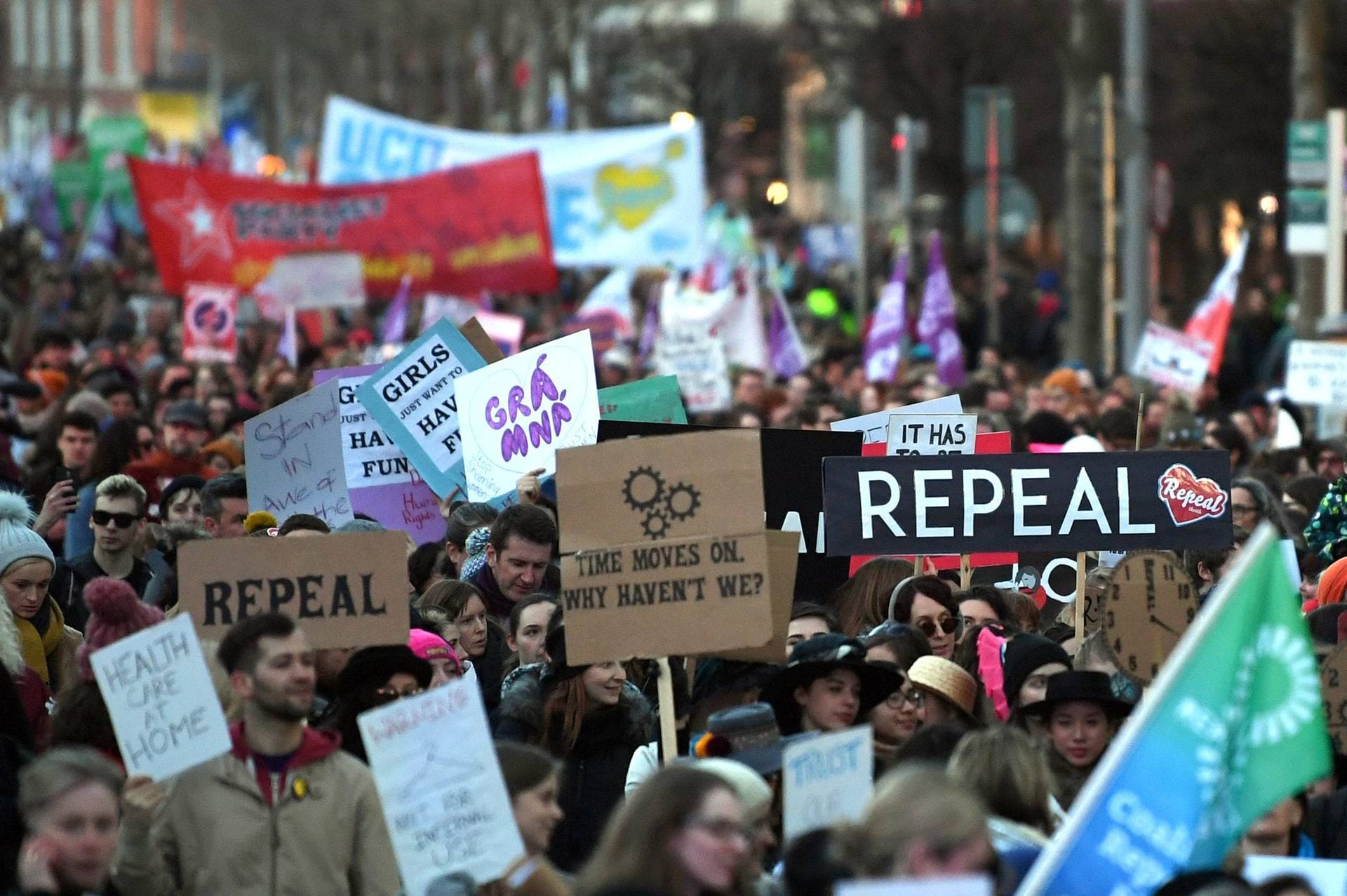Excerpts from the Supreme Court’s decision in Obergfell et al. v. Hodges, director, Ohio Department of Health, et al.
Michigan, Kentucky, Ohio, and Tennessee define marriage as a union between one man and one woman. The petitioners, 14 same-sex couples and two men whose same-sex partners are deceased, filed suits in Federal District Courts in their home States, claiming that respondent state officials violate the Fourteenth Amendment by denying them the right to marry or to have marriages lawfully performed in another State given full recognition. Each District Court ruled in petitioners’ favor, but the Sixth Circuit consolidated the cases and reversed.
Held: The Fourteenth Amendment requires a State to license a marriage between two people of the same sex and to recognize a marriage between two people of the same sex when their marriage was lawfully licensed and performed out-of-State.
* * * * *
The ancient origins of marriage confirm its centrality, but it has not stood in isolation from developments in law and society. The history of marriage is one of both continuity and change. That institution — even as confined to opposite-sex relations — has evolved over time.
* * * * *
These new insights have strengthened, not weakened, the institution of marriage. Indeed, changed understandings of marriage are characteristic of a Nation where new
dimensions of freedom become apparent to new generations, often through perspectives that begin in pleas or protests and then are considered in the political sphere and the judicial process.
This dynamic can be seen in the Nation’s experiences with the rights of gays and lesbians. Until the mid-20th century, same-sex intimacy long had been condemned as immoral by the state itself in most Western nations, a belief often embodied in the criminal law. For this reason, among others, many persons did not deem homosexuals to
have dignity in their own distinct identity. A truthful declaration by same-sex couples of what was in their hearts had to remain unspoken.
* * * * *
In the late 20th century, following substantial cultural and political developments, same-sex couples began to lead more open and public lives and to establish families. This development was followed by a quite extensive discussion of the issue in both governmental and private sectors and by a shift in public attitudes toward greater
tolerance. As a result, questions about the rights of gays and lesbians soon reached the courts, where the issue could be discussed in the formal discourse of the law.
* * * * *
Numerous cases about same-sex marriage have reached the United States Courts of Appeals in recent years. In accordance with the judicial duty to base their decisions on principled reasons and neutral discussions, without scornful or disparaging commentary, courts have written a substantial body of law considering all sides of these issues.
That case law helps to explain and formulate the underlying principles this Court now must consider.
* * * * *
Under the Due Process Clause of the Fourteenth Amendment, no State shall “deprive any person of life, liberty, or property, without due process of law.” The fundamental liberties protected by this Clause include most of the rights enumerated in the Bill of Rights …. In addition these liberties extend to certain personal choices central to individual dignity and autonomy, including intimate choices that define personal identity and beliefs.
* * * * *
This analysis compels the conclusion that same-sex couples may exercise the right to marry. The four principles and traditions to be discussed demonstrate that the reasons marriage is fundamental under the Constitution apply with equal force to same-sex couples.
A first premise of the Court’s relevant precedents is that the right to personal choice regarding marriage is inherent in the concept of individual autonomy.
* * * * *
A second principle in this Court’s jurisprudence is that the right to marry is fundamental because it supports a two-person union unlike any other in its importance to the committed individuals.
* * * * *
A third basis for protecting the right to marry is that it safeguards children and families and thus draws meaning from related rights of childrearing, procreation, and education.
* * * * *
Fourth and finally, this Court’s cases and the Nation’s traditions make clear that marriage is a keystone of our social order.
* * * * *
… just as a couple vows to support each other, so does society pledge to support the couple, offering symbolic recognition and material benefits to protect and nourish the union. Indeed, while the States are in general free to vary the benefits they confer on all married couples, they have throughout our history made marriage the basis for an expanding list of governmental rights, benefits, and responsibilities. These aspects of marital status include: taxation; inheritance and property rights; rules of intestate succession; spousal privilege in the law of evidence; hospital access; medical decision-making authority; adoption rights; the rights and benefits of survivors; birth
and death certificates; professional ethics rules; campaign finance restrictions; workers’ compensation benefits; health insurance; and child custody, support, and visitation rules. Valid marriage under state law is also a significant status for over a thousand provisions of federal law. The States have contributed to the fundamental character of the marriage right by placing that institution at the center of so many facets of the legal and social order.
There is no difference between same- and opposite-sex couples with respect to this principle. Yet by virtue of their exclusion from that institution, same-sex couples are
denied the constellation of benefits that the States have linked to marriage. This harm results in more than just material burdens. Same-sex couples are consigned to an instability many opposite-sex couples would deem intolerable in their own lives. As the State itself makes marriage all the more precious by the significance it attaches to it, exclusion from that status has the effect of teaching that gays and lesbians are unequal in important respects. It demeans gays and lesbians for the State to lock them out of a central institution of the Nation’s society. Same-sex couples, too, may aspire to the transcendent purposes of marriage and seek fulfillment in its highest meaning.
The limitation of marriage to opposite-sex couples may long have seemed natural and just, but its inconsistency with the central meaning of the fundamental right to
marry is now manifest. With that knowledge must come the recognition that laws excluding same-sex couples from the marriage right impose stigma and injury of the kind
prohibited by our basic charter.
* * * * *
Many who deem same-sex marriage to be wrong reach that conclusion based on decent and honorable religious or philosophical premises, and neither they nor their beliefs are disparaged here. But when that sincere, personal opposition becomes enacted law and public policy, the necessary consequence is to put the imprimatur of the State itself on an exclusion that soon demeans or stigmatizes those whose own liberty is then denied. Under the Constitution, same-sex couples seek in marriage the same legal treatment as opposite-sex couples, and it would disparage their choices and diminish
their personhood to deny them this right.
* * * * *
The right of same-sex couples to marry that is part of the liberty promised by the Fourteenth Amendment is derived, too, from that Amendment’s guarantee of the equal protection of the laws.
* * * * *
It is now clear that the challenged laws burden the liberty of same-sex couples, and it must be further acknowledged that they abridge central precepts of equality. Here the
marriage laws enforced by the respondents are in essence unequal: same-sex couples are denied all the benefits afforded to opposite-sex couples and are barred from exercising
a fundamental right. Especially against a long history of disapproval of their relationships, this denial to same-sex couples of the right to marry works a grave and
continuing harm. The imposition of this disability on gays and lesbians serves to disrespect and subordinate them. And the Equal Protection Clause, like the Due Process
Clause, prohibits this unjustified infringement of the fundamental right to marry.
* * * * *
These considerations lead to the conclusion that the right to marry is a fundamental right inherent in the liberty of the person, and under the Due Process and Equal Protection Clauses of the Fourteenth Amendment couples of the same-sex may not be deprived of that right and that liberty. The Court now holds that same-sex couples may exercise the fundamental right to marry. No longer may this liberty be denied to them. Baker v. Nelson must be and now is overruled, and the State laws challenged by Petitioners in these cases are now held invalid to the extent they exclude same-sex couples from civil marriage on the same terms and conditions as opposite sex couples.
* * * * *
Finally, it must be emphasized that religions, and those who adhere to religious doctrines, may continue to advocate with utmost, sincere conviction that, by divine precepts, same-sex marriage should not be condoned. The First Amendment ensures that religious organizations and persons are given proper protection as they seek to teach
the principles that are so fulfilling and so central to their lives and faiths, and to their own deep aspirations to continue the family structure they have long revered. The
same is true of those who oppose same-sex marriage for other reasons. In turn, those who believe allowing same-sex marriage is proper or indeed essential, whether as a matter of religious conviction or secular belief, may engage those who disagree with their view in an open and searching debate. The Constitution, however, does not permit
the State to bar same-sex couples from marriage on the same terms as accorded to couples of the opposite sex.
* * * * *
















